Table of Contents
- Introduction: Why Shave Your Cat for Fleas
- Understanding Fleas: How They Affect Your Cat
- Preparing to Shave Your Cat: Tools and Supplies You’ll Need
- Step-by-Step Guide to Shaving Your Cat for Fleas
- After the Shave: Caring for Your Cat’s Skin
- Alternatives to Shaving: Other Flea Prevention Methods
- Risks and Precautions: What to Watch Out For
- Conclusion: Is Shaving Your Cat for Fleas Right for You?
- Additional Resources for Flea Prevention and Cat Grooming.
Introduction: Why Shave Your Cat for Fleas
As a responsible pet owner, you always want to ensure that your furry friend is healthy and happy. One of the biggest threats to your cat’s health is fleas, and these tiny parasites can quickly multiply and cause significant discomfort for your pet. While there are many ways to prevent and treat fleas, one lesser-known method is to shave your cat.
Benefits of Shaving Your Cat for Fleas
Shaving your cat can be a highly effective way to prevent fleas from infesting your pet’s coat. Fleas and their eggs often hide deep within a cat’s fur, making it difficult to reach them with topical flea treatments or even regular combing. Shaving your cat removes the majority of their fur, making it easier to spot and remove any fleas or eggs present.
Shaving your cat can also make it easier to apply flea treatments directly to your pet’s skin, which can be highly effective in killing fleas and preventing future infestations. Additionally, a shaved cat is much easier to keep clean, which can help prevent fleas and other parasites from taking up residence on your pet.
Is Shaving Your Cat Safe?
While shaving your cat may seem extreme, it is generally safe for most healthy cats. However, it is important to note that some cats may be more sensitive to the process and may experience discomfort or irritation as a result. It is always a good idea to consult with your veterinarian before attempting to shave your cat, especially if your pet has a history of skin conditions or allergies.
Overall, shaving your cat for fleas can be a highly effective method of flea prevention and treatment. However, it is important to take the necessary precautions and ensure that the process is done safely and carefully. In the following sections, we will discuss in detail the steps involved in shaving your cat, as well as alternative methods for flea prevention and treatment.

Understanding Fleas: How They Affect Your Cat
Fleas are tiny, wingless insects that feed on the blood of mammals, including cats. These parasites are highly mobile and can jump up to 150 times their body length, making them difficult to catch and control. When a flea bites a cat, it injects saliva into the skin which can cause itching and irritation.
Symptoms of Flea Infestation
Fleas can cause a range of symptoms in cats, including excessive scratching and grooming, hair loss, skin irritation, and even anemia in severe cases. If left untreated, fleas can lead to other health problems, including the transmission of diseases.
If you suspect that your cat has fleas, it is important to act quickly to prevent the infestation from spreading. In addition to physical symptoms, you may also notice small brown or black dots on your cat’s skin or in their bedding, which are flea eggs and feces.
The Life Cycle of Fleas
Understanding the life cycle of fleas is important in controlling and preventing their spread. Adult fleas lay eggs on their host, which then fall off onto the ground or other surfaces. These eggs hatch into larvae, which feed on organic matter and debris in the environment. The larvae then spin cocoons and enter a pupal stage, where they remain until conditions are suitable for emerging as adult fleas.
Because the majority of the flea’s life cycle takes place off of the host, it is important to treat both your cat and their environment to effectively control and prevent flea infestations.
In the next section, we will discuss the preparations you should make before attempting to shave your cat for fleas, including the tools and supplies you’ll need.
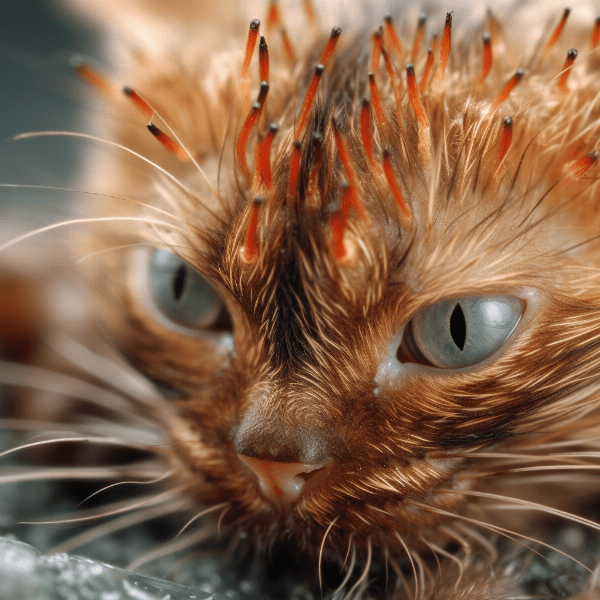
Preparing to Shave Your Cat: Tools and Supplies You’ll Need
Before attempting to shave your cat for fleas, it is important to gather all of the necessary tools and supplies. This will ensure that the process goes as smoothly and safely as possible for both you and your pet.
Tools You Will Need
One of the most important tools you’ll need for shaving your cat is an electric clipper with a fresh, sharp blade. It’s important to choose a clipper that is specifically designed for use on pets, as human clippers may not be powerful enough to handle a cat’s thick fur.
In addition to an electric clipper, you will also need a pair of grooming scissors for trimming any hard-to-reach areas, such as around your cat’s ears and paws. A pair of sharp nail clippers is also useful for trimming your cat’s claws before the shave.
Supplies You Will Need
Before you begin the shave, you’ll need to gather a few supplies to make the process easier and more comfortable for your pet. These supplies include:
- Towels: You’ll need at least two towels to help secure your cat and protect your clothing from loose fur and debris.
- Cat shampoo: It’s important to use a gentle, cat-specific shampoo to clean your pet’s skin after the shave.
- Flea comb: Even after shaving your cat, it’s possible that some fleas or eggs may remain on their skin. A flea comb can help you remove any remaining pests.
- Styptic powder: In case of accidental nicks or cuts, styptic powder can help stop bleeding quickly.
Safety Precautions
Before beginning the shave, make sure that your cat is healthy and free from any skin conditions or injuries. It’s also important to choose a quiet, comfortable location for the shave where your cat feels safe and secure.
Taking the time to gather all of the necessary tools and supplies and taking the proper safety precautions will help ensure a successful shave and prevent any discomfort or harm to your furry friend. In the next section, we will provide a step-by-step guide to shaving your cat for fleas.
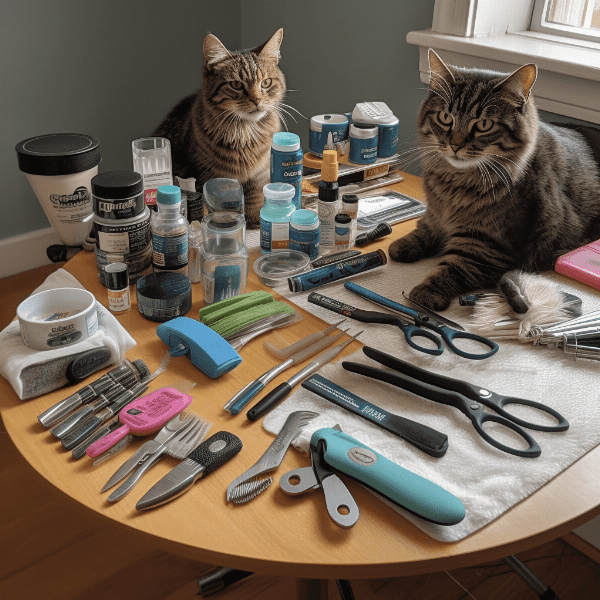
Step-by-Step Guide to Shaving Your Cat for Fleas
Shaving your cat for fleas can be a daunting task, but with the right tools and preparation, it can be done safely and effectively. Here is a step-by-step guide to shaving your cat for fleas:
Step 1: Trim Your Cat’s Nails
Before beginning the shave, it’s important to trim your cat’s nails to prevent accidental scratches. Use a pair of sharp nail clippers to trim the tips of your cat’s claws, being careful not to cut too close to the quick.
Step 2: Brush Your Cat’s Fur
Use a soft-bristled brush or comb to remove any tangles or mats from your cat’s fur. This will make the shave easier and more comfortable for your pet.
Step 3: Secure Your Cat
Wrap your cat in a towel, leaving their head and paws exposed. This will help prevent your cat from squirming or running away during the shave. If your cat becomes too agitated or stressed, it’s okay to take a break and try again later.
Step 4: Use the Electric Clipper
Turn on the electric clipper and begin shaving your cat’s fur, starting at the neck and moving down towards the tail. Use long, smooth strokes and be careful not to press too hard or nick your cat’s skin. Pay special attention to hard-to-reach areas, such as behind the ears and under the legs.
Step 5: Use Scissors for Trimming
Use grooming scissors to trim any remaining fur in hard-to-reach areas or around your cat’s paws. Be sure to hold your cat’s paw securely and avoid cutting the skin.
Step 6: Remove Any Remaining Fleas
Use a flea comb to remove any remaining fleas or eggs from your cat’s skin. Be sure to dispose of any fleas in a sealed bag to prevent re-infestation.
Step 7: Clean Your Cat
Use a gentle, cat-specific shampoo to clean your pet’s skin and remove any loose fur or debris. Rinse thoroughly and dry your cat with a towel.
Step 8: Monitor Your Cat
After the shave, monitor your cat for any signs of discomfort or irritation. If your pet seems to be in pain or has any unusual symptoms, contact your veterinarian immediately.
By following these steps and taking the proper safety precautions, you can successfully shave your cat for fleas and help prevent future infestations. In the next section, we will discuss how to care for your cat’s skin after the shave.

After the Shave: Caring for Your Cat’s Skin
After shaving your cat for fleas, it’s important to take extra care in caring for their skin. Here are some steps you can take to ensure that your pet’s skin stays healthy and comfortable after the shave:
Keep Your Cat Warm
Without their thick fur, your cat may be more susceptible to changes in temperature. Make sure to keep your pet warm and cozy, especially during colder months.
Apply a Soothing Balm
Shaving can be stressful for your cat’s skin, so applying a soothing balm can help alleviate any discomfort. Look for a product specifically designed for pets, and apply a small amount to your cat’s skin.
Protect Your Cat from Sunlight
Without their fur, your cat’s skin may be more sensitive to sunlight. Keep your pet indoors during the sunniest parts of the day or provide them with a shaded area to relax in.
Monitor for Irritation
After the shave, it’s important to monitor your cat’s skin for any signs of irritation or infection. Look for redness, swelling, or discharge, and contact your veterinarian if you notice any unusual symptoms.
Avoid Using Flea Treatments Immediately After the Shave
It’s important to wait a few days after the shave before applying any flea treatments to your pet’s skin. This will give your cat’s skin time to heal and prevent any further irritation or discomfort.
By taking these extra steps to care for your cat’s skin after the shave, you can help prevent any further discomfort or complications. In the next section, we will discuss alternative methods for flea prevention and treatment.
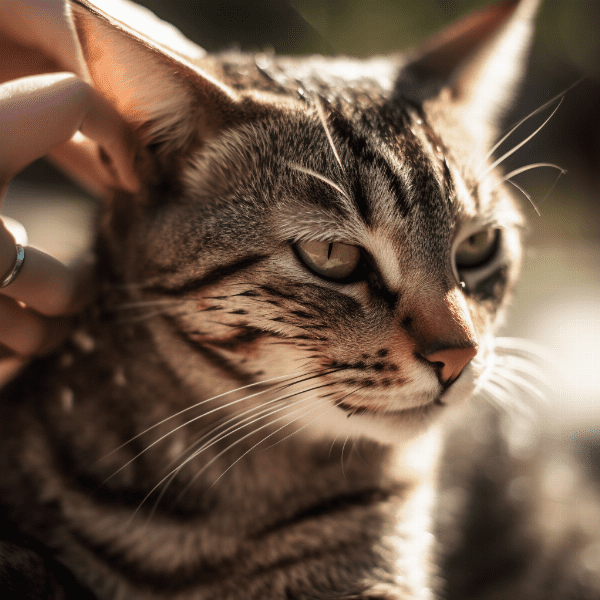
Alternatives to Shaving: Other Flea Prevention Methods
While shaving your cat can be an effective method for preventing and treating flea infestations, it’s not the only option available. Here are some alternative methods for flea prevention and treatment:
Topical Flea Treatments
Topical flea treatments are a popular option for many pet owners. These treatments are applied directly to your cat’s skin and work by killing fleas and their eggs on contact. Some common topical flea treatments include Frontline, Advantage, and Revolution.
Flea Collars
Flea collars are another option for preventing and treating flea infestations. These collars release a small amount of flea-killing chemicals over time, which can provide long-term protection for your pet. Be sure to choose a flea collar that is specifically designed for cats, as dog flea collars can be toxic to felines.
Oral Medications
Oral medications can also be effective in preventing and treating flea infestations. These medications are typically administered once a month and work by preventing flea eggs from hatching. Some common oral flea medications include Comfortis, Capstar, and Program.
Environmental Treatments
Because fleas can live in your cat’s environment, it’s important to treat your home and yard as well as your pet. Vacuuming regularly, washing bedding in hot water, and using flea sprays or foggers can help eliminate fleas and prevent future infestations.
Natural Remedies
There are also many natural remedies that can be effective in preventing and treating flea infestations. Some common natural flea remedies include diatomaceous earth, apple cider vinegar, and essential oils such as lavender and peppermint.
By exploring these alternative methods for flea prevention and treatment, you can find the method that works best for you and your pet. Remember to always consult with your veterinarian before trying any new flea treatment methods.
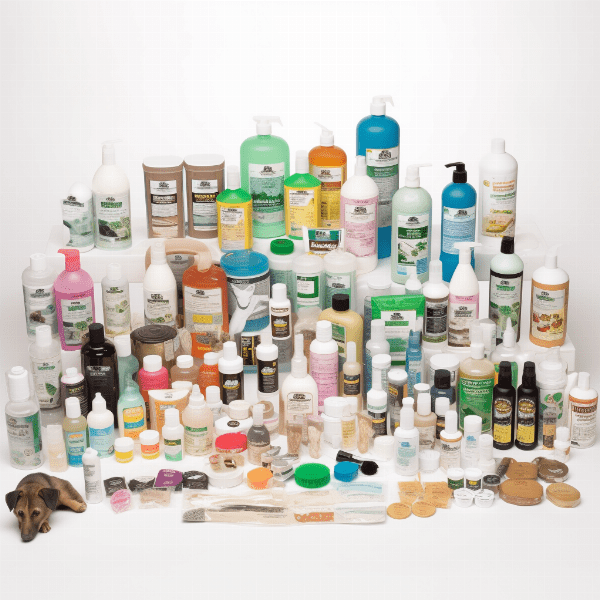
Risks and Precautions: What to Watch Out For
While shaving your cat for fleas can be a highly effective method of flea prevention and treatment, it is important to take the necessary precautions to ensure the process is done safely and carefully. Here are some risks and precautions to watch out for:
Skin Irritation and Injury
Shaving your cat can cause skin irritation and injury if not done properly. Be sure to use the right tools and take your time during the shave to prevent accidentally nicking or cutting your pet’s skin.
Stress and Discomfort
Shaving can be a stressful and uncomfortable experience for your cat. Make sure to provide a quiet and comfortable environment for the shave, and monitor your pet’s behavior and reactions throughout the process.
Allergic Reactions
Some cats may be allergic to certain flea treatments or grooming products, which can cause allergic reactions such as itching, redness, and swelling. If you notice any unusual symptoms after the shave, contact your veterinarian immediately.
Skin Infections
If your cat has an open wound or skin infection, shaving can aggravate the condition and cause further harm. It’s important to consult with your veterinarian before attempting to shave a cat with any pre-existing skin conditions.
Overheating
Without their thick fur, your cat may be more susceptible to overheating. Make sure to monitor your pet’s temperature during and after the shave, and provide plenty of water and a cool place to rest.
By taking the necessary precautions and watching out for these risks, you can help ensure that the shaving process is safe and effective for your furry friend. If you have any concerns or questions about shaving your cat for fleas, don’t hesitate to consult with your veterinarian.
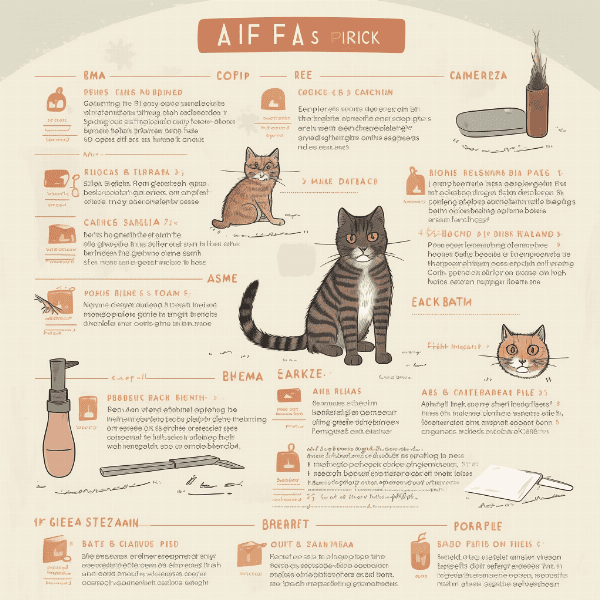
Conclusion: Is Shaving Your Cat for Fleas Right for You?
Shaving your cat for fleas can be a highly effective method of flea prevention and treatment, but it’s not the only option available. By exploring alternative methods such as topical treatments, flea collars, and natural remedies, you can find the method that works best for you and your pet.
If you do choose to shave your cat for fleas, it’s important to take the necessary precautions to ensure the process is done safely and carefully. This includes using the right tools and supplies, taking breaks as needed, and monitoring your pet’s behavior and reactions.
Ultimately, the decision of whether or not to shave your cat for fleas depends on your individual situation and the needs of your pet. Consult with your veterinarian to determine the best course of action for your furry friend.
By taking the necessary precautions and exploring all of your options for flea prevention and treatment, you can help keep your cat healthy, happy, and free from fleas.

Additional Resources for Flea Prevention and Cat Grooming.
If you’re interested in learning more about flea prevention and cat grooming, there are a variety of resources available to you. Here are some additional resources to help you care for your furry friend:
Your Veterinarian
Your veterinarian is an excellent resource for flea prevention and cat grooming advice. They can recommend specific products and methods for flea prevention and treatment, as well as provide guidance on proper cat grooming techniques.
Online Pet Care Communities
Online pet care communities, such as forums and social media groups, can provide a wealth of information and support for cat owners. You can connect with other cat owners and learn from their experiences and recommendations.
Pet Care Websites
There are many websites dedicated to pet care and cat grooming. These sites often offer articles, videos, and tutorials on flea prevention and grooming techniques.
Cat Grooming Books
There are also a variety of books available on cat grooming and flea prevention. These books can provide in-depth information and step-by-step instructions on grooming techniques and flea treatment methods.
By utilizing these additional resources, you can become more knowledgeable about flea prevention and cat grooming, and provide the best possible care for your furry friend.




